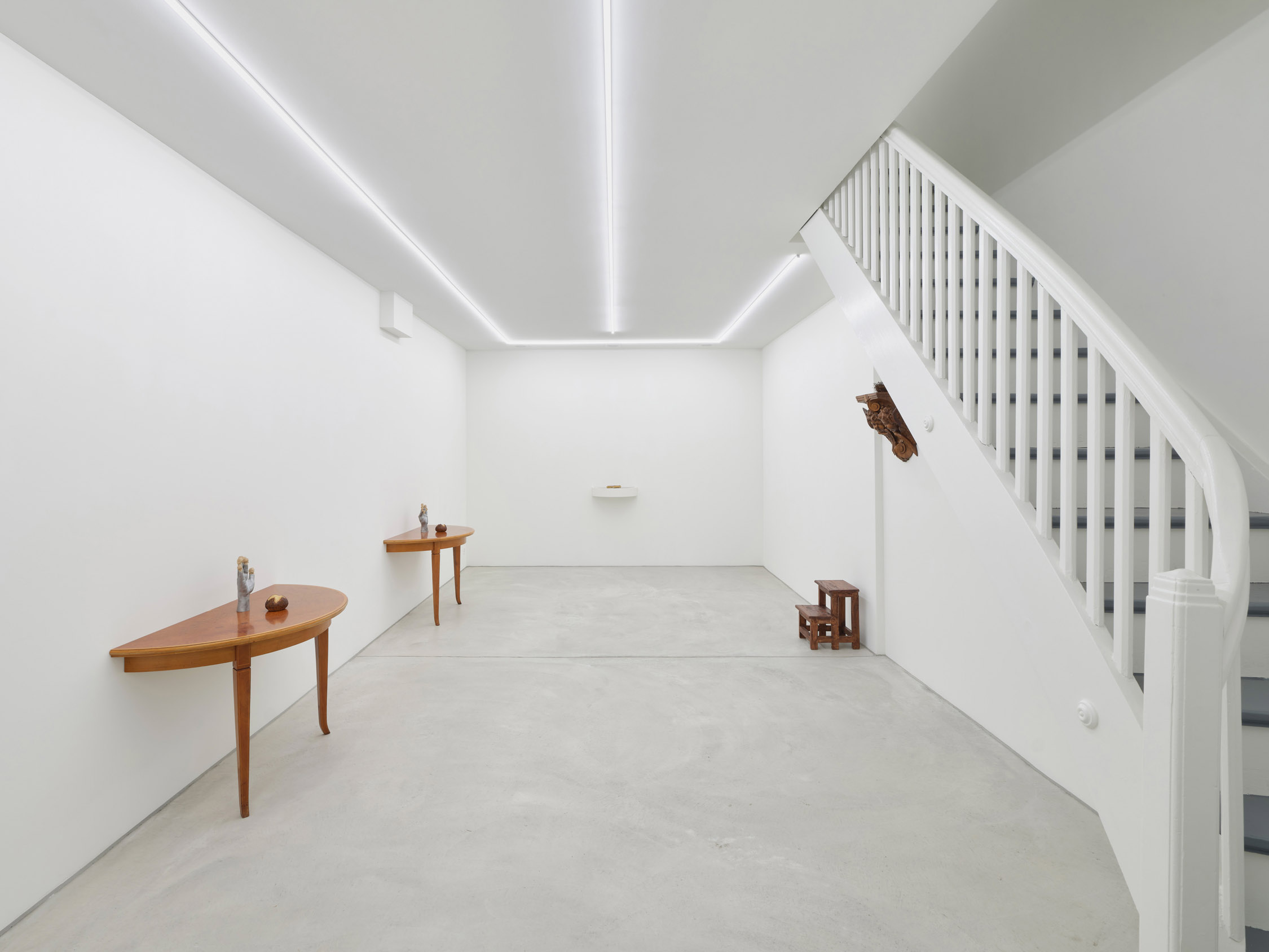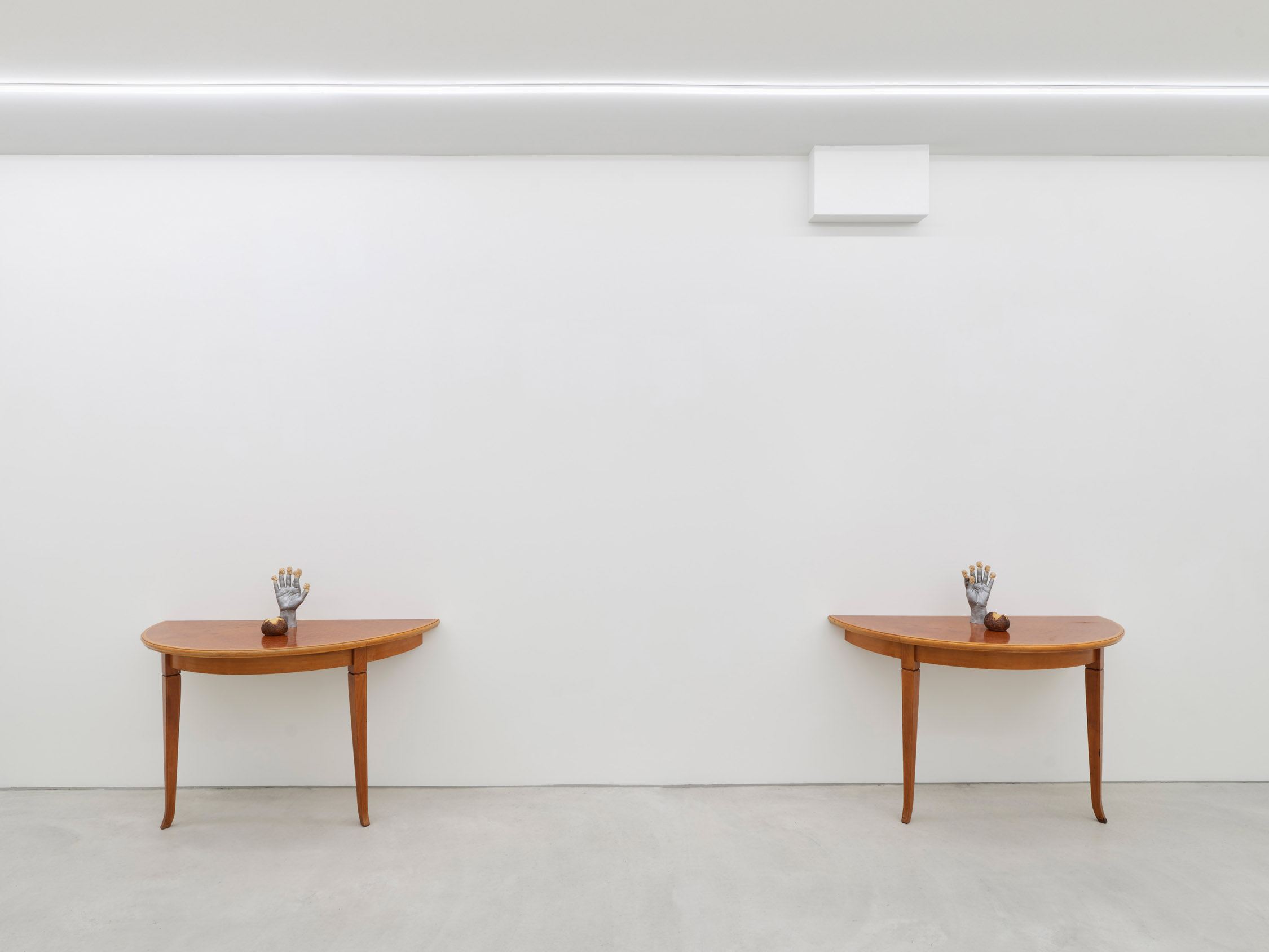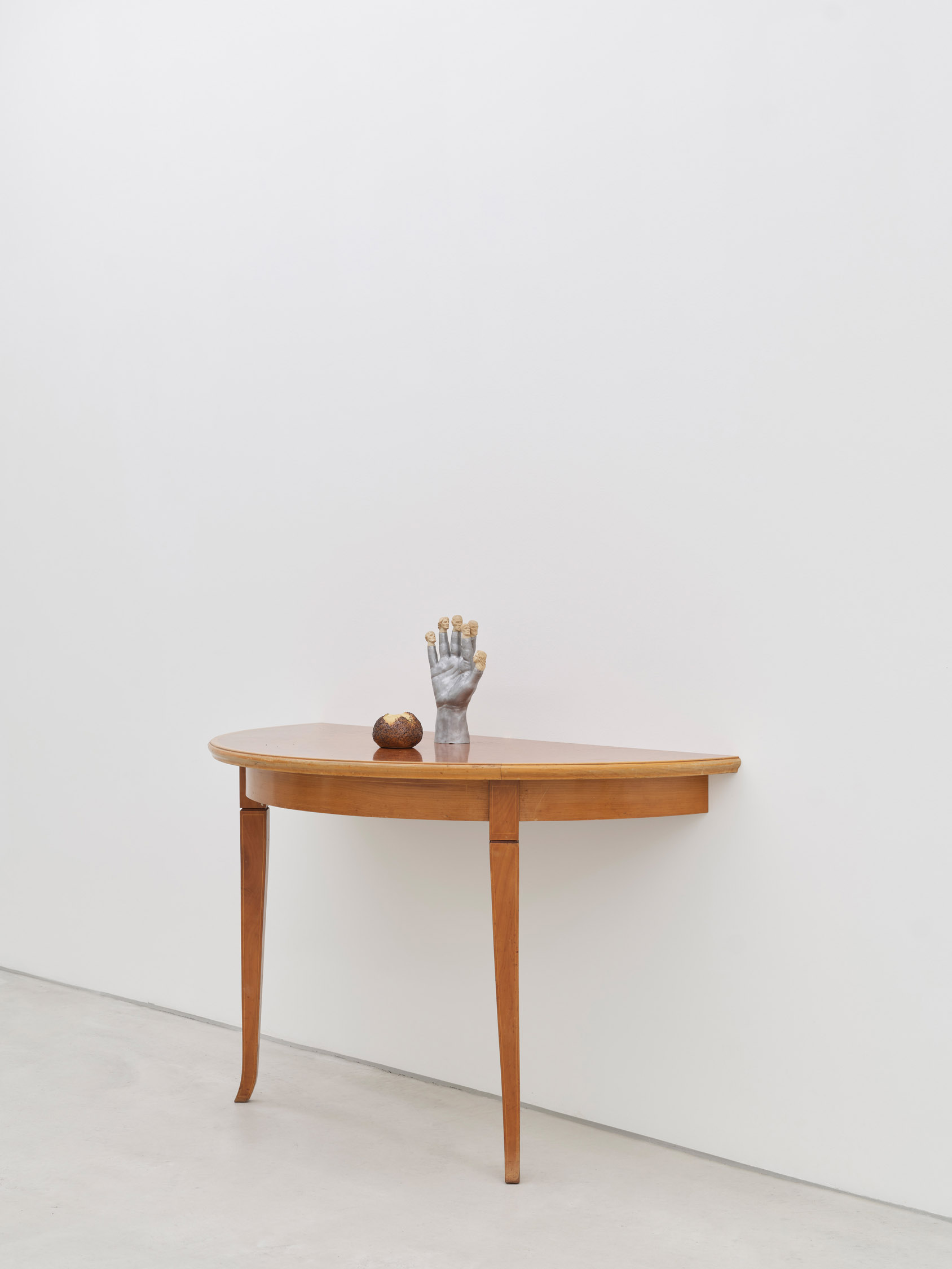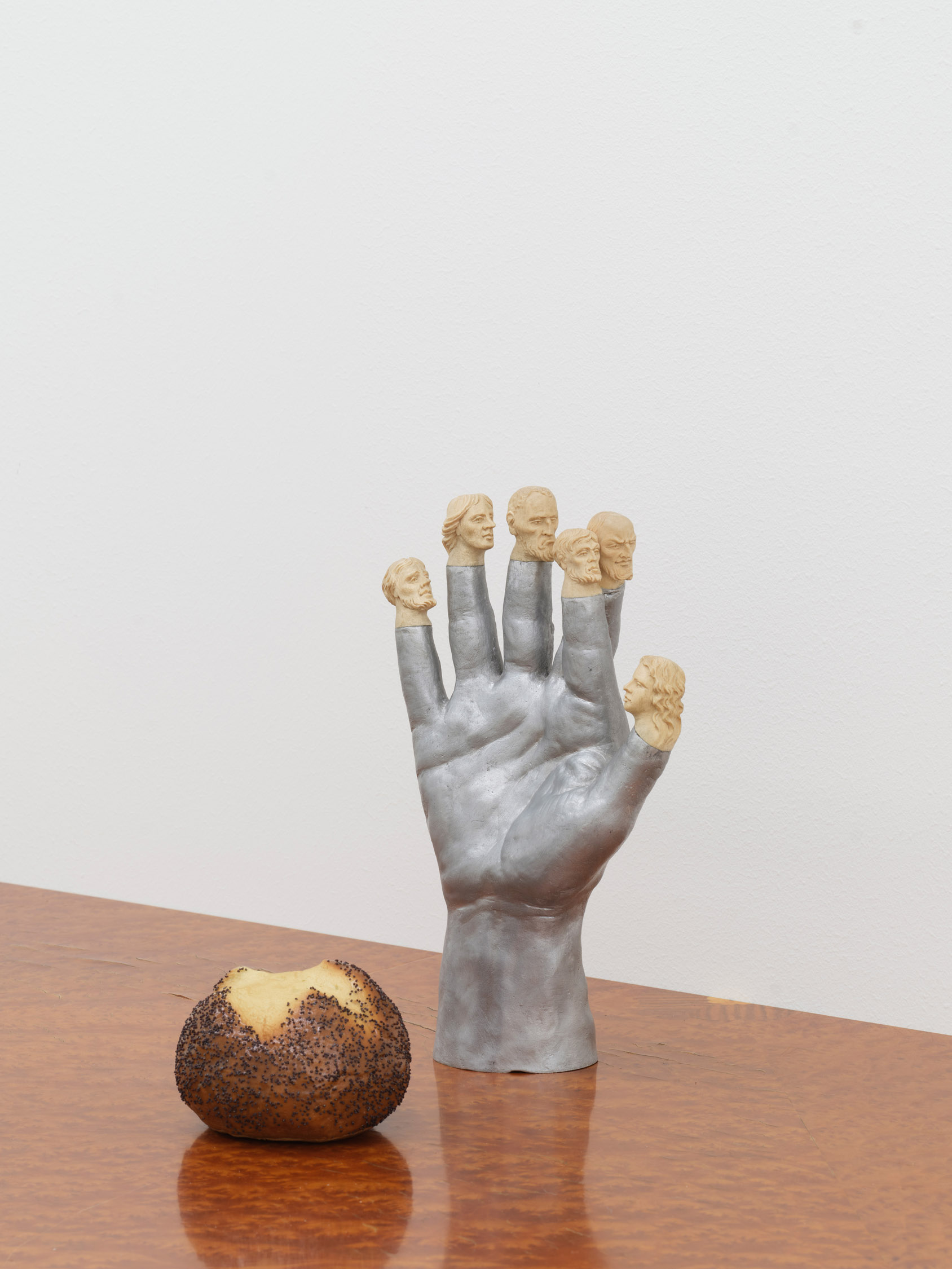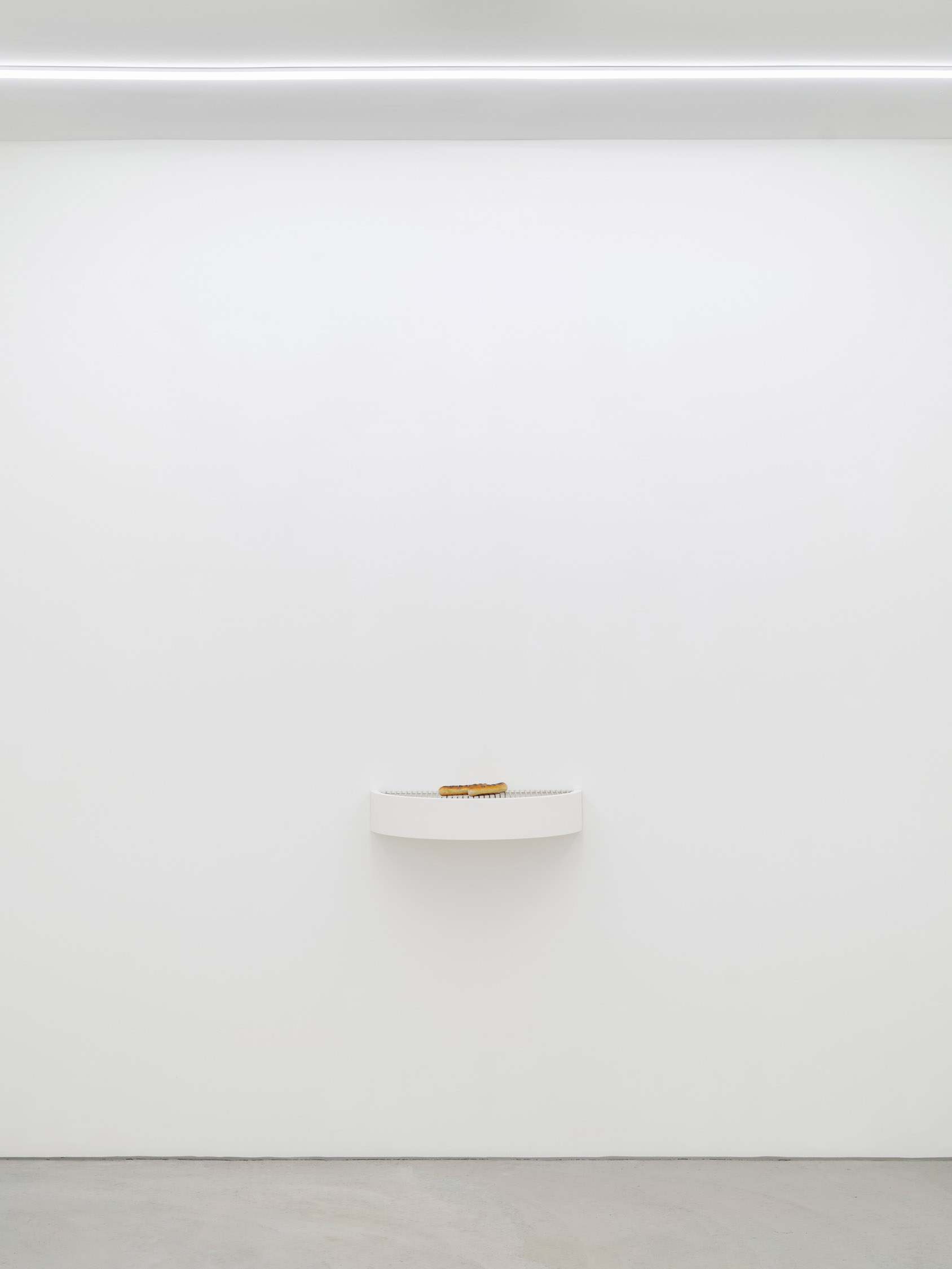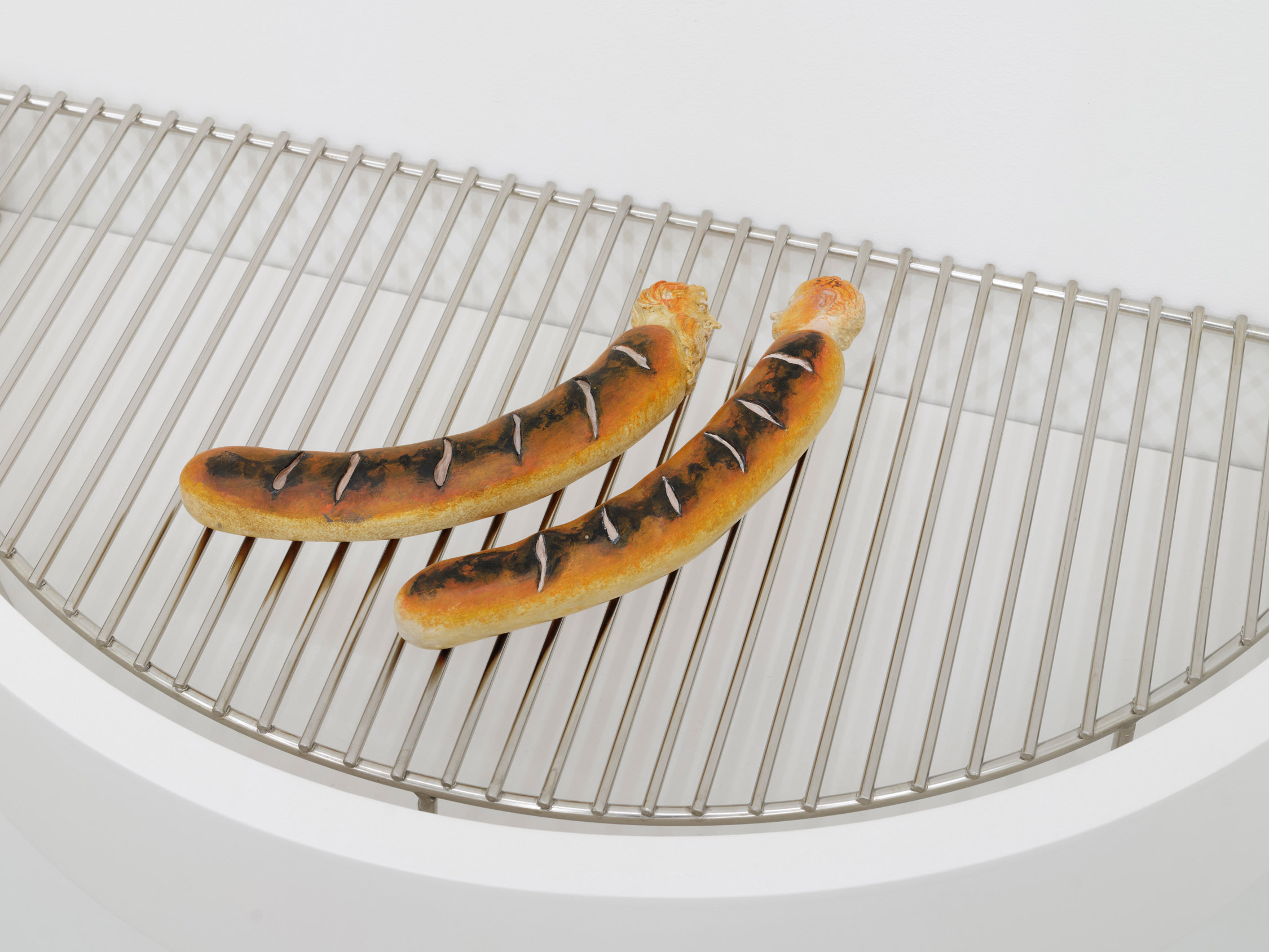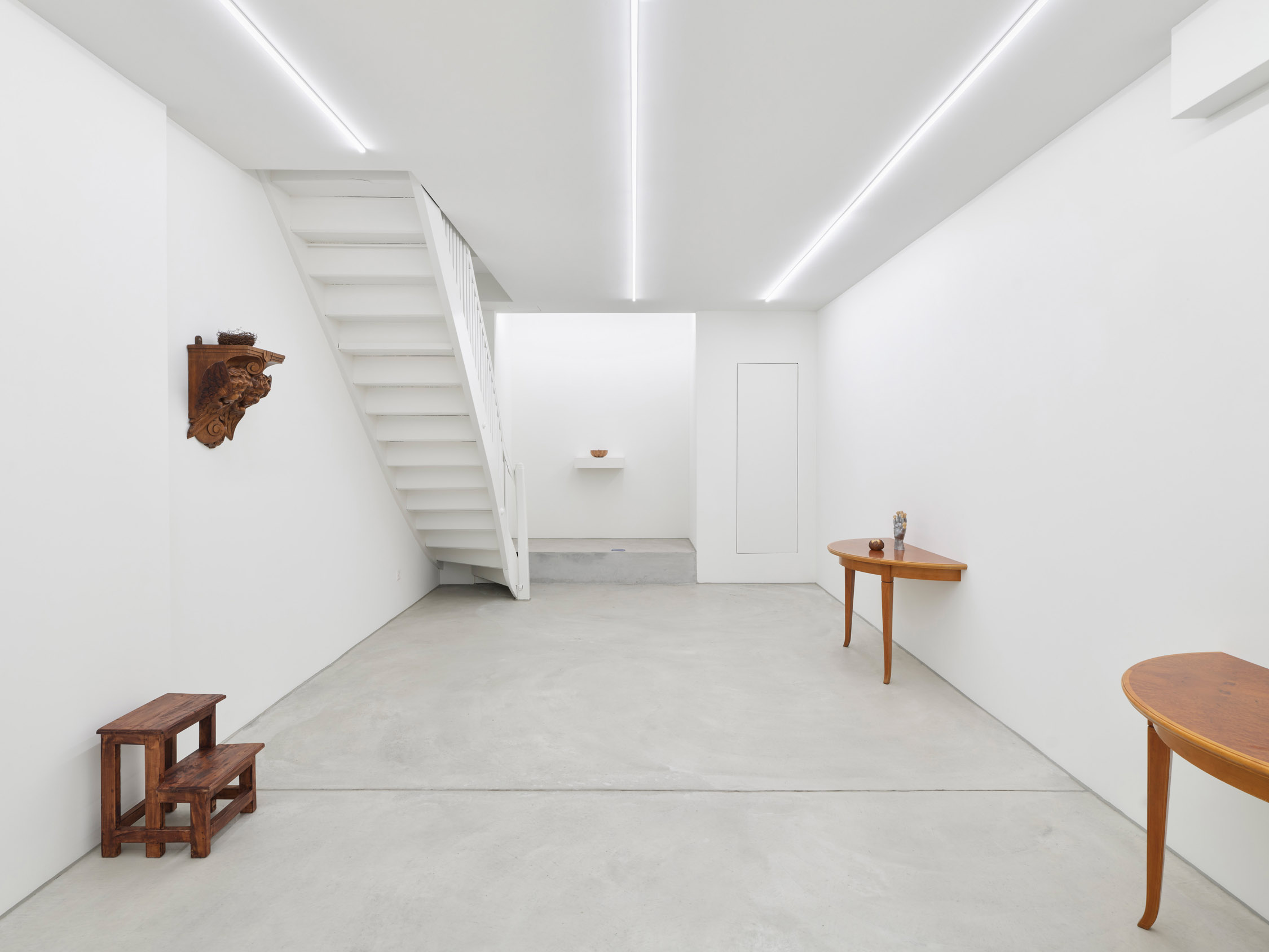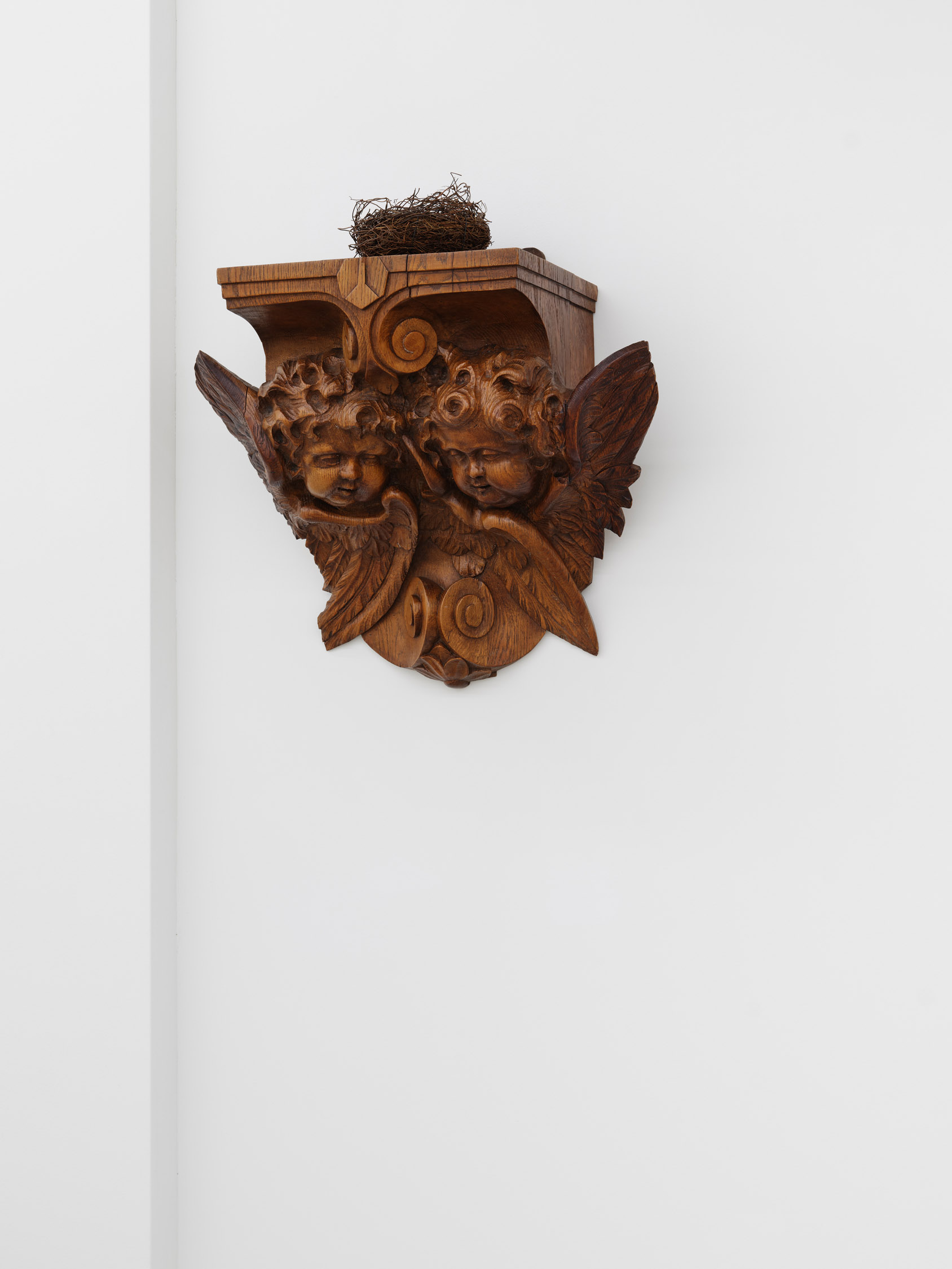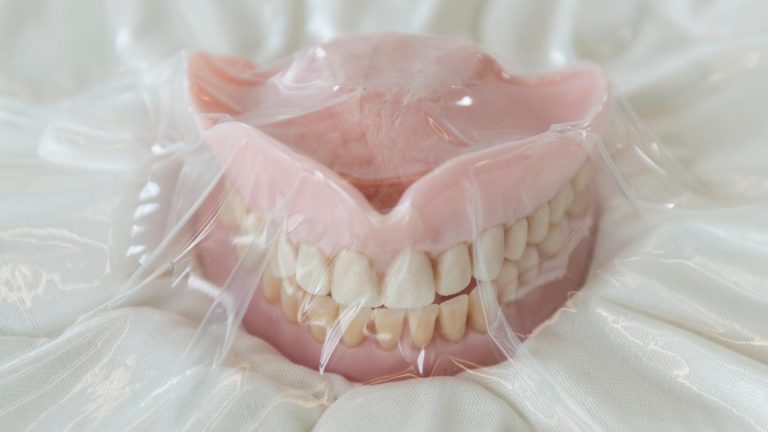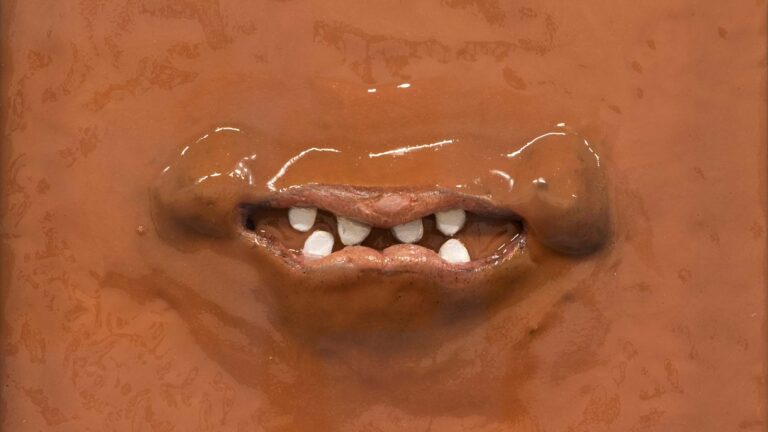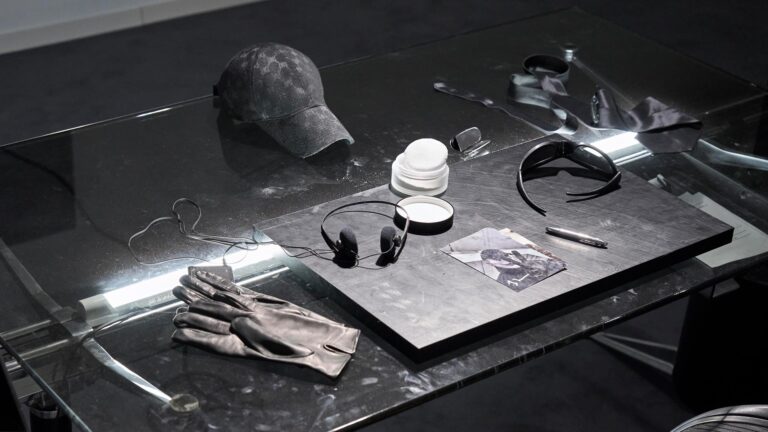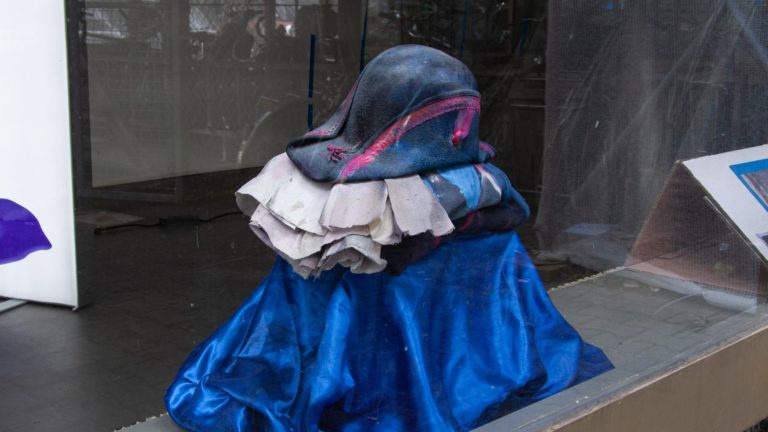Artist: Young-jun Tak
Exhibition title: Pain Is Left After the Bite
Venue: PHILIPPZOLLINGER, Zürich, Switzerland
Date: June 7 – July 20, 2024
Photography: all images copyright and courtesy of the artist and PHILIPPZOLLINGER, Zürich
Pain Is Left After the Bite is Young-jun Tak’s first Swiss solo exhibition at PHILIPPZOLLINGER, presenting five new sculptures. In his sculptures, installations, and videos, Tak examines human belief systems and their impact on societal and cultural structures. This exhibition investigates the power of pivotal absence in narratives and our self-efficacy on filling up the gap according to our likings, as this fundamental social cognitive function affects every detail in our lives. The exhibition title suggests that the most recognizable absence in the gallery space is teeth and tongues, haunted by (un)pleasant oral desire, the artist leads us to situations that let our perspectives determine where invisible traces are marked.
Descending through the staircase to Tak’s exhibition, viewers encounter the first sculpture, Wishful (2024), that combines a shell-shaped holy water stoup, hand-carved in Veronese rose marble, and a hyper-realistic silicone cast of the artist!s own nipple. Stoups contain blessed water for believers to dip their fingers in and sanctify themselves, and by doing so, it is believed that one can purify the uncleanliness of daily life. The severed breast is a common Christian motif; the breast of Saint Agatha of Sicily was cut off by pincers, and its presentation on a plate has been reproduced as relics, artworks, and even desserts. The solemnity of religion could not avoid a sexualization of the female body, linked to the long-lasting patriarchal perspective. This sculpture alternatively offers a male counterpart, which may be uninteresting from the traditional viewpoint, although for some it can be attractive. Our common sense about the human body suggests doughtiness under this male nipple; however, one’s belief encourages some to think that a drop of ecstasy can be experienced by certain attempt and effort.
Dominating the exhibition space, the paired sculptures Seem More (2024) and Seem Less (2024), which resemble hand-shaped Christian relics, present two life-sized aluminum-cast hands, each standing upright on a half-moon-shaped dining table against the largest wall. Each hand oddly has six fingers, and all fingertips are replaced with male heads made in wood. The twelve heads correspond to the Twelve Apostles in the high renaissance painting The Last Supper (ca. 1495–1498) by Leonardo da Vinci. All the heads are carved by a wooden religious sculpture workshop run by a Bavarian family that has been in the business for 15 generations. The dramatic tension, wonder, and shame among the Apostles, vividly rendered in their facial expressions, are originally generated by the middle figure of both groups; however, Jesus is not placed between the tables. The viewer can assume the obvious cause of this sensational scandal by referring the scene to the worldly renowned painting and the biblical context, but the central absence leaves the situation rather hectic and confusing without the mediative quintessence of the narrative. The hands of the sculptures show their palms toward the viewer, as if grasping for something, and an artificial bread roll, laid in front of each of them, somehow reduces the dignity and solemnity of the holy moment into rather a trivial dispute driven by simple, profane desire.
Next to the scene of the drama, two wooden sausages are placed on a stainless-steel grill, framed in a wooden wall shelf around. In this sculpture, Never Enough (2024), each end of the roasted sausages metamorphosed to a head of Saint Nicholas: one with his elderly look and the other from his younger age. A legend tells that the saint resurrected pickled children murdered by a butcher in a village that suffered from a great famine; hence, he is regarded as the savior of hunger. The roasted sausage, Bratwurst in German, is broadly consumed in Germany, eastern Switzerland, and Austria, and the eating style and culture have developed into a pseudo-religion, such as the mustard ban for the St. Gallen Bratwurst. The heads of the saint, referred to in historical paintings, are carved by the afore mentioned Bavarian wood-carving master family.
Lastly, the sculpture Bountiful (2024) consists of an antique wooden shelf, adorned with two putti and hung on the wall relatively high under the staircase, with a bird nest placed on top of the shelf that can be partly seen from underneath. The viewer is encouraged to climb onto a step stool next to the sculpture, revealing what the nest incubates: another hyper-realistic silicone cast of the artist’s other nipple, as if it is a never-ending but malfunctioning source of nurture. The artist has used his nipple in a series of sculptures as a counteroffering to sexualized body parts of female martyrs, unlike male ones. The sculpture teases one’s desire to look and discover something hidden, returning either joy or disappointment.
Young-jun Tak was born 1989, in Seoul, South Korea and lives and works in Berlin, Germany.Tak studied English Language and Literature, as well as Cross-Cultural Studies. Recent solo exhibitions include COMA (Sydney, 2024); at Atelier Hermès (Seoul, 2024); Julia Stoschek Foundation (Berlin and Düsseldorf, 2023); palace enterprise (Copenhagen, 2023); Wanås Konst (Knislinge 2023); O—Overgaden (Copenhagen, 2023); SOX (Berlin, 2022); and Efremidis (Berlin, 2022). He has participated in numerous international group exhibitions such as at the High Line (New York, 2023); Chicago Architecture Biennial (2023); Lyon Biennale (2022); Perrotin (Paris, 2022); KINDL Center for Contemporary Art (Berlin, 2022); Berlin Biennale (2020), Seoul Museum of Art (2019); and Istanbul Biennial (2017).
